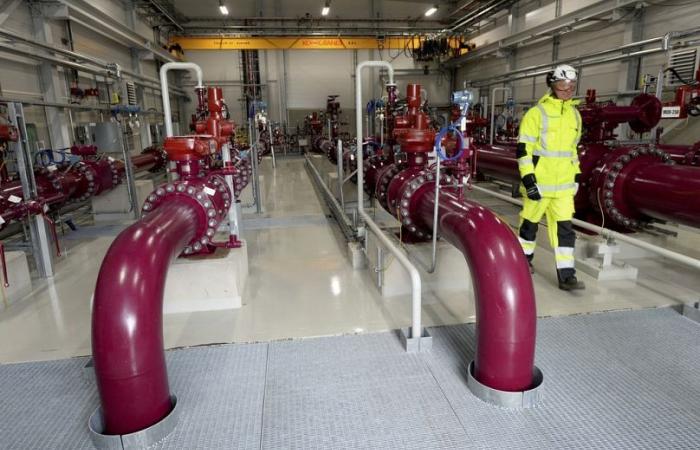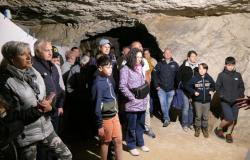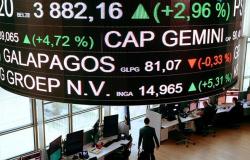There is a possible path to decarbonizing the gas sectors of the Baltic states and Finland by 2050 or sooner. The choice is stark: invest now to reshape the energy landscape or pay high environmental and geopolitical costs later, write Gowtham Muthukumaran and Javad Keypour.
The European Union is at a critical juncture, facing the dual crises of escalating climate threats and geopolitical instability.
From the devastating consequences of climate change to the recent energy crisis triggered by Russian aggression in Ukraine, the EU’s vulnerabilities are glaring.
The European Green Deal, a commitment made by all Member States, requires a rapid decoupling of natural gas. This represents both a major challenge and a remarkable opportunity.
In the Finland-Baltic region, natural gas consumption varies, with usage rates of 3% in Finland, 6% in Estonia, 16% in Latvia and 19% in Lithuania. Although these percentages may seem modest, natural gas is essential for heating and other essential social functions.
The 2021 energy crisis, which caused high price volatility, highlighted the risks associated with this dependence. While prices have stabilized, environmental and geopolitical risks persist, highlighting the urgency of decarbonization.
“No regrets” policies are crucial
In 2023 alone, EU natural gas production generated 0.75 billion tonnes of CO2 emissions, demonstrating once again the need for comprehensive decarbonisation strategies.
These strategies include replacing natural gas with renewable hydrogen and biomethane, as well as measures such as electrification and energy optimisation. These changes promise a decarbonised and resilient gas system for the EU, as well as stable prices and reliable supply for consumers.
A new report, “Gas decarbonisation pathways for Estonia”, outlines four potential pathways to carbon neutrality for the Baltic-Finnish gas area by 2050: continuing current policies, failing to achieve carbon neutrality by 2050 (business as usual scenario), replacing natural gas with renewable hydrogen (renewable hydrogen scenario), replacing natural gas with renewable methane/biomethane (renewable methane scenario), integrating renewable hydrogen and methane to phase out natural gas, balancing decarbonisation and profitability (most minimal scenario).
The minimum cost scenario appears to be the most viable, requiring an estimated investment of EUR 9.01 billion by 2050 to build the necessary infrastructure. This approach aims to reduce natural gas imports by 2040, thereby strengthening energy independence and security. The exploitation of existing infrastructure such as the Klaipeda LNG terminal can efficiently meet demand, reducing the need for new costly projects.
This scenario focuses on the deployment of biomethane and the setting of strict emission reduction targets, consistent with broader environmental objectives. Projected CO2 emissions in all participating countries would fall to less than 0.2 million tonnes by 2030, paving the way for a carbon-neutral regional gas market.
“No regrets” policies are essential to increase biomethane production and develop renewable hydrogen capacities because they offer benefits regardless of future conditions.
Supported by renewable electricity generation, transitioning existing natural gas infrastructure to accommodate new gas through retrofits and repurposing is essential. Combined with increased electrification and improved energy efficiency, these measures form the backbone of a future resilient energy system.
Achieving seamless gas market integration requires strong political commitment and cooperation among the Baltic states.
Lithuania’s partial integration into the Baltic-Finland area illustrates the challenges of achieving a unified market. Closing these integration gaps is essential to maximising regional operational efficiency.
Adapt what you have
A successful energy transition also requires full coordination between the gas and electricity sectors. This includes aligning the development of renewable energy infrastructure with improvements in gas infrastructure.
It is necessary to adapt existing facilities, such as Latvia’s underground gas storage, to handle new gas and periods of high demand. A comprehensive reassessment of gas network development plans ensures the feasibility of gas supply to smaller and more remote areas.
The investment required to decarbonise the gas sector, although substantial, is justified by the long-term environmental and economic benefits.
The study reveals that the average production costs of biomethane, which is expected to be the dominant fuel in 2050, will be significantly lower than the prices of natural gas, i.e. €52.5/MWh compared to €96/MWh.
The transition promises increased economic output, job creation, reduced long-term energy costs and reduced dependence on imported fuels.
The costs of delay are enormous, not only in economic terms but also in terms of human lives and environmental degradation.
The hottest year on record, 2023, was marked by unprecedented extreme temperatures and “once-in-a-century” storms, causing widespread droughts, disease and resource conflicts. These adversities hit the most vulnerable communities hardest, exacerbating existing inequalities and threatening livelihoods.
An opportunity for transformation is to be seized
The common gas market between the Baltic States and Finland offers a transformative opportunity to reduce total gas demand and import needs, thereby mitigating regional geopolitical risks.
By advancing this transition, we are not only addressing immediate environmental threats, but also aligning with the EU’s broader environmental objectives, setting a precedent for sustainable energy practices.
It is time to act. We have a unique opportunity to secure a sustainable and fair energy future for the Baltic and Finnish region and beyond. Delaying action only increases risks and costs, while rapid action promises a resilient and prosperous future.
Policy makers must seize this opportunity to move towards a cleaner, greener energy landscape.






